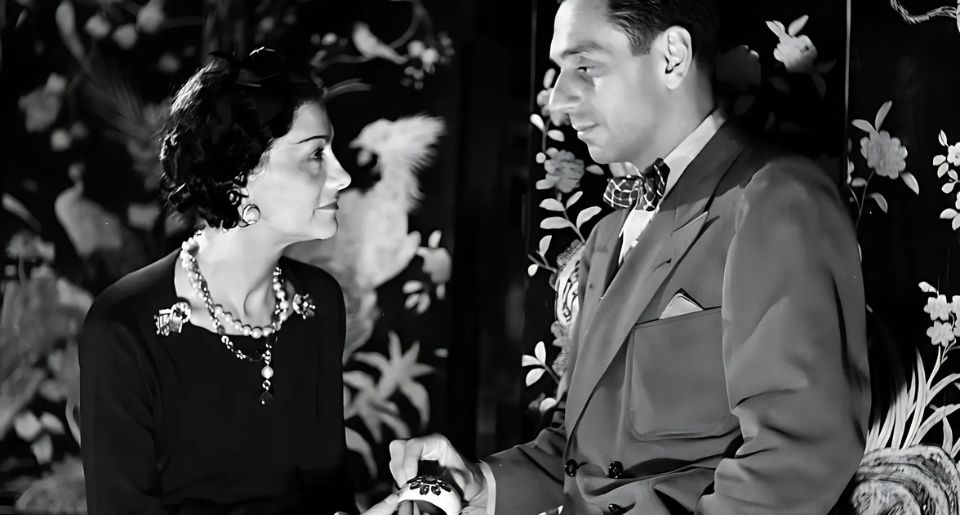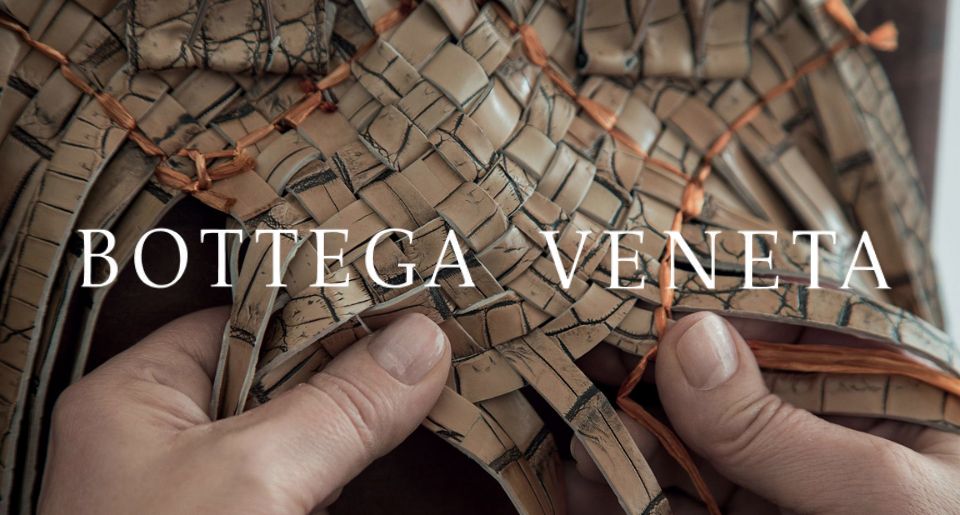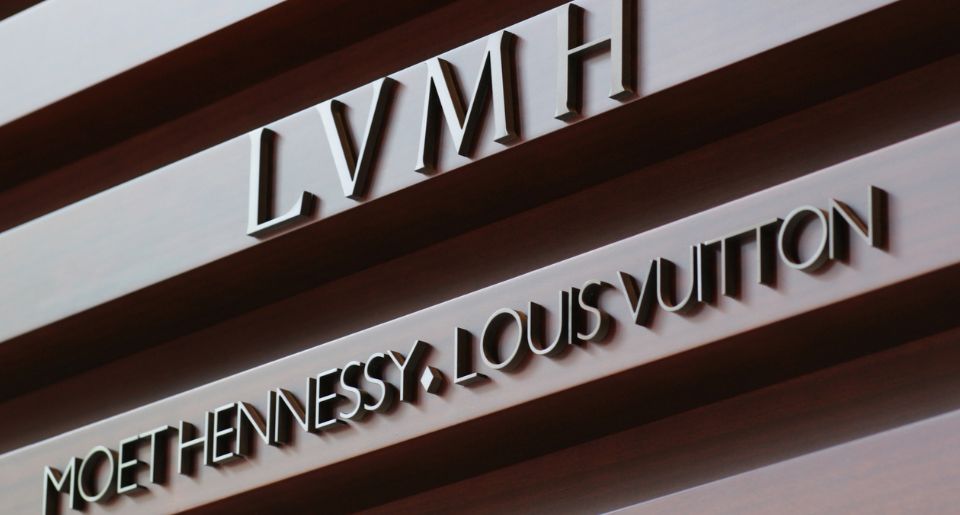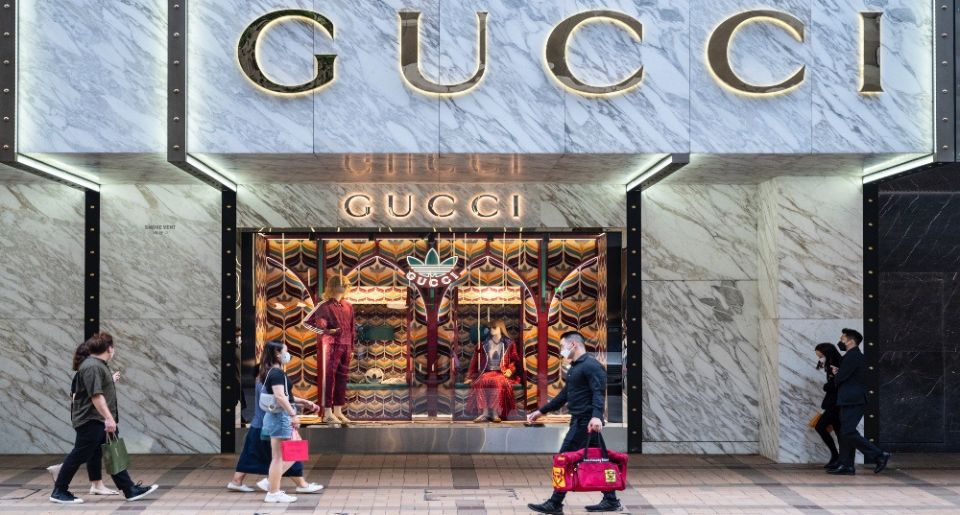Fulco di Verdura and Coco Chanel, Paris, 1937.
Image courtesy of Town & Country.
Contents
It was a legendary moment when Mademoiselle Gabrielle “Coco” Chanel met Fulco di Verdura, a Sicilian nobleman known for his carefree lifestyle. Fulco was nearly depleting his inherited wealth on lavish parties at his ancestral home when he crossed paths with Chanel, but he was far from the high-society playboy he appeared to be.
A Young Duke’s Dream—Realized Magnificently

Fulco di Verdura.
Image courtesy of Vanity Fair.
Fulco Santostefano della Cerda, who would later become known as the Duke of Verdura, was born into an aristocratic family in Palermo, Sicily. Duke Fulco di Verdura made his mark in the fashion world during the 1920s in Paris, creating the now-iconic Maltese Cross Cuffs for Coco Chanel.
His journey took him to America in 1934, where he designed exquisite pieces for silver screen legends like Greta Garbo and Marlene Dietrich. His legendary creations for high-profile elites earned him the esteemed title of "America's Crown Jeweler," recognizing his role in adorning the most glamorous figures in the country.
On the very day World War II began, September 1, 1939, he opened his jewelry salon on Fifth Avenue, marking his transition to the famous "American jeweler." While Europe was embroiled in conflict, Verdura was out there winning the hearts of New York's high society and the fashion elite with his designs—bold, yet elegantly understated, continuing to dazzle just as brightly today.
It Was a Match Made in Heaven
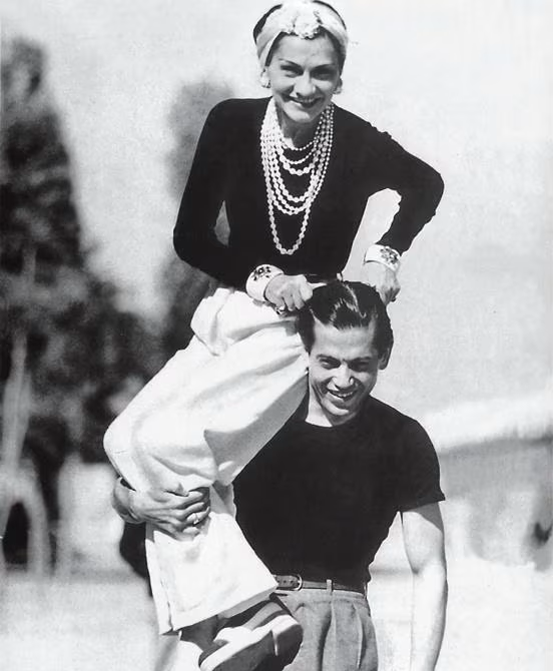
Fulco di Verdura holding Coco Chanel.
Image courtesy of Stream24 - Il Sole 24 ORE.
At the encouragement of the Porters, the future Duke of Verdura moved to Paris in 1927 to design textiles for his friend, Coco Chanel. He then organized a grand "1799" costume ball at Palazzo Verdura in Palermo, inviting the Porters, Coco Chanel, Elsa Maxwell, and 300 of his closest friends.
Though the extravagant gala drained his remaining inheritance, it elevated his status to international prominence. Was it a worthwhile trade-off? His lasting legacy suggests it might have been.
Coco Chanel as Muse
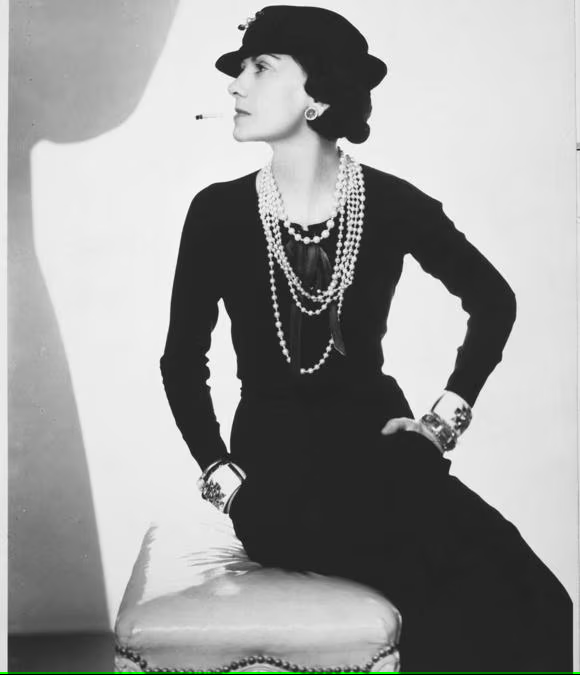
Coco Chanel wearing Verdura’s Maltese Cross Cuffs
Image courtesy of Stream24 - Il Sole 24 ORE.
Between 1930 and 1934, Fulco started his foray into jewelry design at Chanel. With Coco herself as his muse, he introduced his groundbreaking "Byzantine" jewelry designs. These pieces, marked by their lavish use of gold and gemstones, revolutionized the jewelry industry by challenging conventional design norms.
Byzantine jewelry carries a timeless appeal, showcasing intricate craftsmanship that draws from the legacy of the Roman Empire. From ornate necklaces to elegant rings, these items are made with such precision and detail they lure in avid jewelry enthusiasts and seasoned collectors alike.
The Early Designs That Sparked Momentum
Diana Vreeland, a prominent fashion editor and loyal Chanel client, became the proud owner of two of Verdura's earliest and most famous pieces—the "Theodora" and "Ravenna" brooches.

Diana Vreeland adorning her turban with the "Theodora" and "Ravenna" brooches, specially crafted for her by Fulco di Verdura.
The three images are courtesy of Verdura and Ŧhe ₵oincidental Ðandy.
Verdura's initial forays into the jewelry world marked a dramatic departure from the conventional styles of the era, introducing striking starburst patterns that captivated the fashion elite. Among these early innovations were two magnificent pieces—the "Theodora" and "Ravenna" brooches—-crafted in 18k gold and adorned with rubies, sapphires, and semi-precious stones.
It was love at first sight for Diana Vreeland, who instantly made these two dazzling pieces a staple in her personal collection. She famously adorned herself with these jewels, often elegantly attaching them to her turban.
This creative momentum led Verdura to design the iconic Maltese Cross cuffs for Coco Chanel, pieces that became synonymous with the fashion trends of the time.
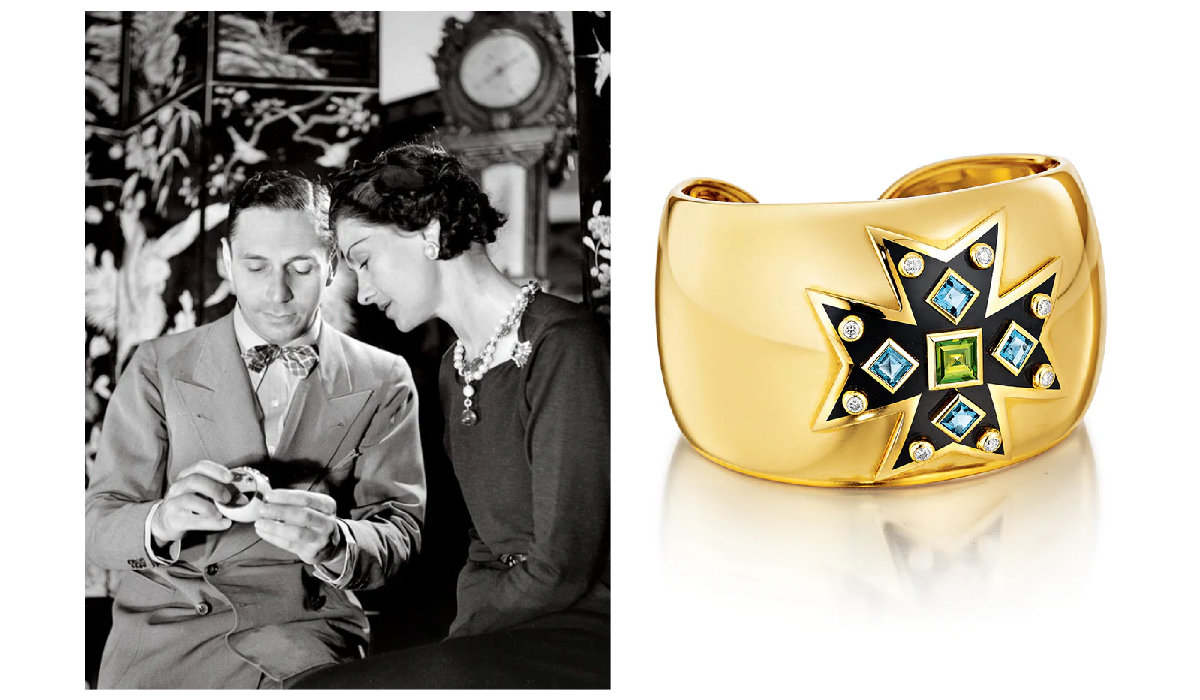
Fulco di Verdura and Coco Chanel.
The two images are courtesy of Verdura.
Verdura's Maltese Cross Cuffs continue to captivate with their bold elegance, just as they did back in the 1930s. This extraordinary piece, featuring a white enamel cuff embellished with stunning cabochons and semi-precious stones within a gold cross, marked the beginning of what would become one of the most iconic designs in fashion history.
The Baron, The Princess, and The Duke

Fulco di Verdura and Baron Niki de Gunzburg, Palm Beach, Florida, USA, 1935..
Image courtesy of Verdura.
In 1934, the young Duke set off for America with his glamorous entourage, Baron Niki de Gunzburg, and Princess Natalie Paley, touring from New York to Palm Beach and, ultimately, Hollywood.
Diana Vreeland bridges a crucial connection a year later, introducing Fulco to Paul Flato, the celebrated "Jeweler to the Stars."
Fulco lands the role of head designer and quickly makes his mark with iconic pieces. Among these is the striking aquamarine and ruby "Belt" necklace, a bespoke creation for Linda Porter, the fashion-forward wife of Cole Porter.
A Hollywood Favorite Back Then—And Still
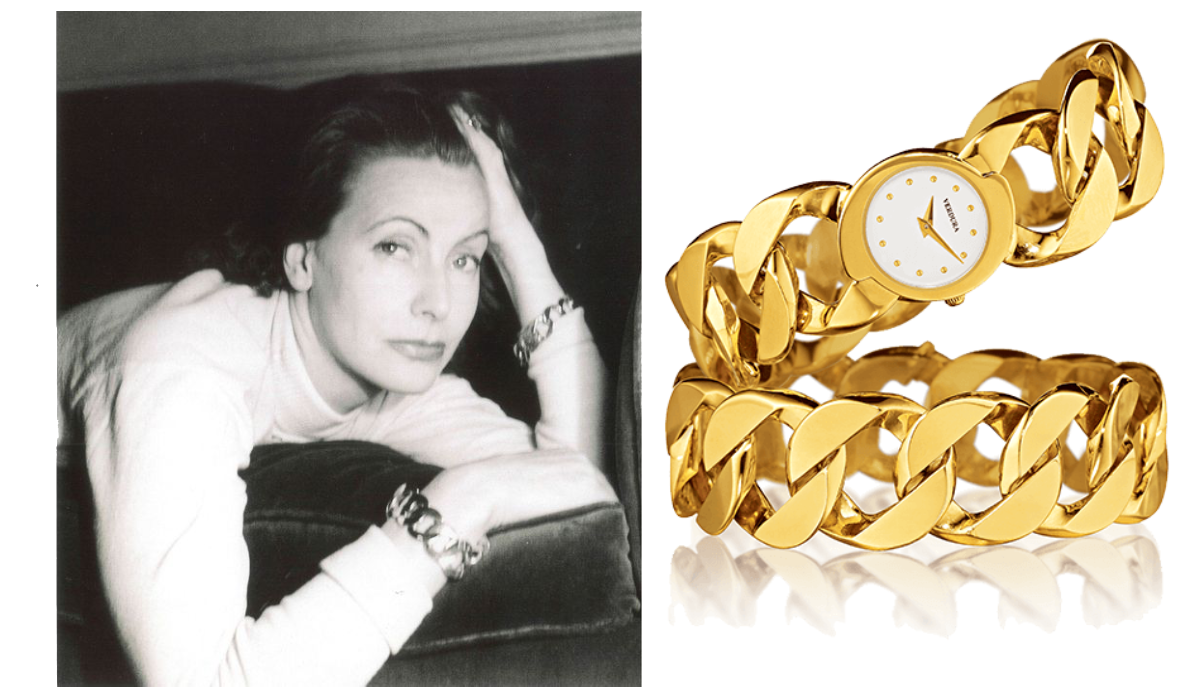
Greta Garbo wearing the Verdura Curb-Link bracelet and watch.
The two images are courtesy of Verdura.
Fulco makes a trip to Los Angeles in 1938 for the grand opening of Flato’s latest store on Sunset Boulevard. His Hollywood connections enable him to design signature pieces for stars such as Greta Garbo, Katharine Hepburn, Joan Crawford, Elsa Schiaparelli, and Marlene Dietrich.
During this time, the Curb-Link bracelet and watch became synonymous with Greta Garbo. When the actress first displayed her Curb-Link bracelet and watch in 1941 during her last film's publicity, she almost never appeared without those distinctive gold links on her wrists.
Today, the classic link continues to be a favorite among modern style icons, preserving its legacy as a timeless fashion staple.
Remarkable Times in the History of Jewelry
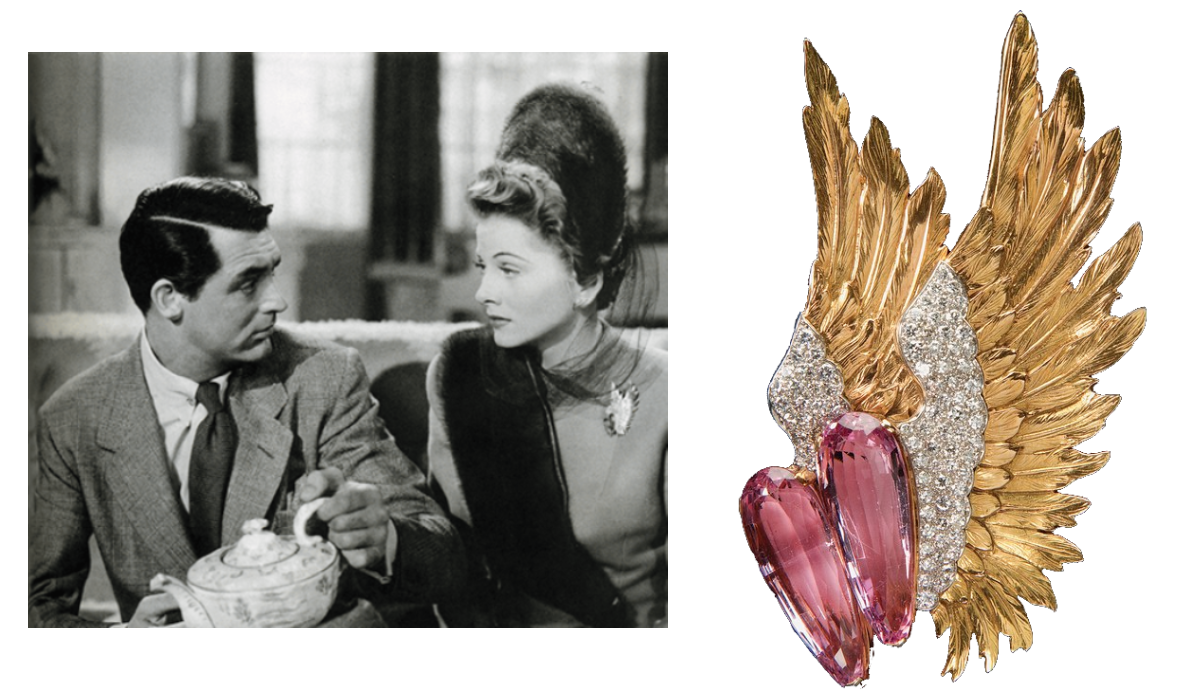
Joan Fontaine wearing Verdura’s pink topaz and diamond "Wing" brooch in the 1941 film Suspicion.
The two images are courtesy of Verdura and Ŧhe ₵oincidental Ðandy.
Fulco di Verdura's journey through the 1940s is marked by a series of prestigious achievements. In 1940, Joan Fontaine acquired Fulco's exquisite pink topaz and diamond "Wing" brooch, which she famously wears in Alfred Hitchcock's 1941 Suspicion.
Verdura's brooch presents a stunning design with a heart-shaped pink topaz surrounded by precious golden feathers that give a textured, lifelike appearance. The piece exemplifies di Verdura's genius in conceptualizing never-seen-before designs, effortlessly dazzle at first glance.
In that same remarkable year, Fulco made an unconventional purchase—a collection of sea shells from the American Museum of Natural History in New York.
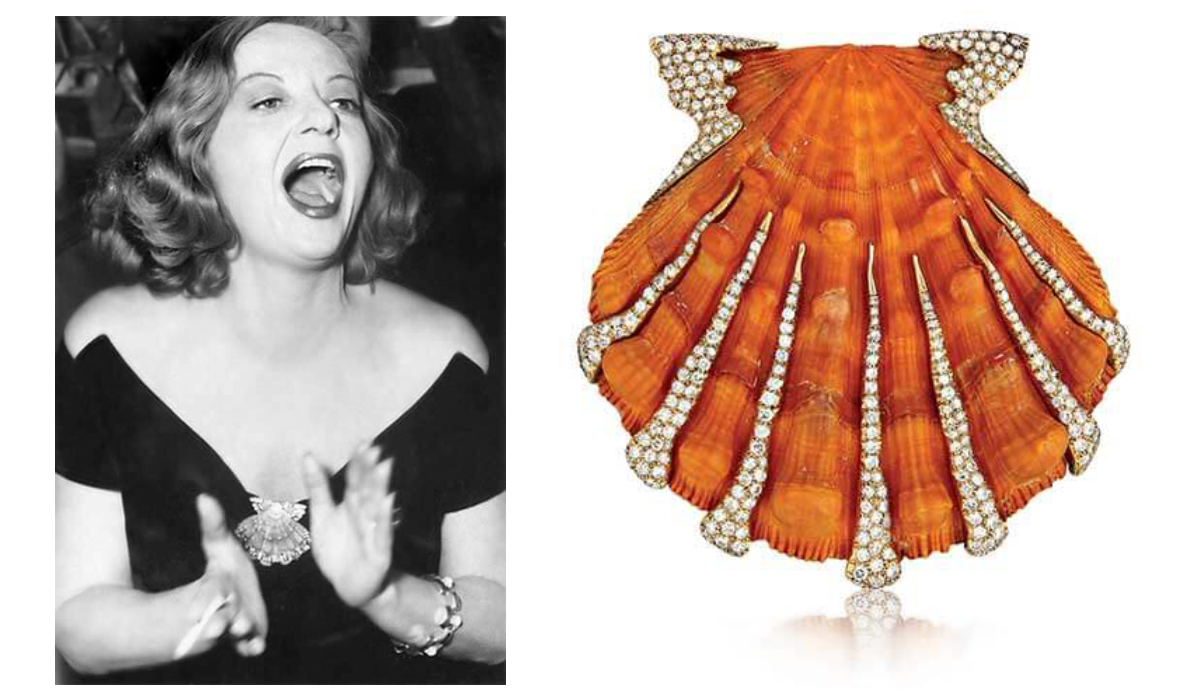
Tallulah Bankhead wearing the Verdura Lion’s Paw shell brooch.
The two images are courtesy of Verdura.
He ingeniously set these shells in gold and adorned them with precious gems, creating pieces that quickly captivated New York's high society, including Tallulah Bankhead, Millicent Rogers, and Betsey Whitney.
The Lions Paw Brooch rivals the famed Maltese Cross pendant and Curb Link bracelet in popularity and surpasses them in rarity, as each piece relies on the rare find of a perfect natural shell.
Debuting in October 1940, the first brooch quickly found its way into Millicent Rogers' collection. It wasn't long before Tallulah Bankhead secured one for herself—after all, who could resist such a rare and naturally luxurious beauty?
The year 1940 witnessed a creative surge from Fulco, highlighted by his whimsical "Target" earrings launch. These quickly became a hit among high-society figures like Millicent Rogers and Dorothy Paley, cementing their place as favorites in the elite circles.

Dorothy Paley wearing the Verdura’s "Target" earrings.
The two images are courtesy of Verdura.
The fanciful earrings showcase a dynamic design that reflects Verdura’s love for lavish proportions. Featuring feather-tipped arrows, each piece creatively pierces through bands of woven gold—a nod to Verdura’s iconic rope motifs. One arrow elegantly strikes the diamond-encrusted bull's-eye, adding a spectacular final touch to this imaginative piece.
A standout event from the same decade is the groundbreaking collaboration between Fulco di Verdura and Salvador Dalí. Together, they launched their first surrealist jewelry collection, featuring five historic pieces.
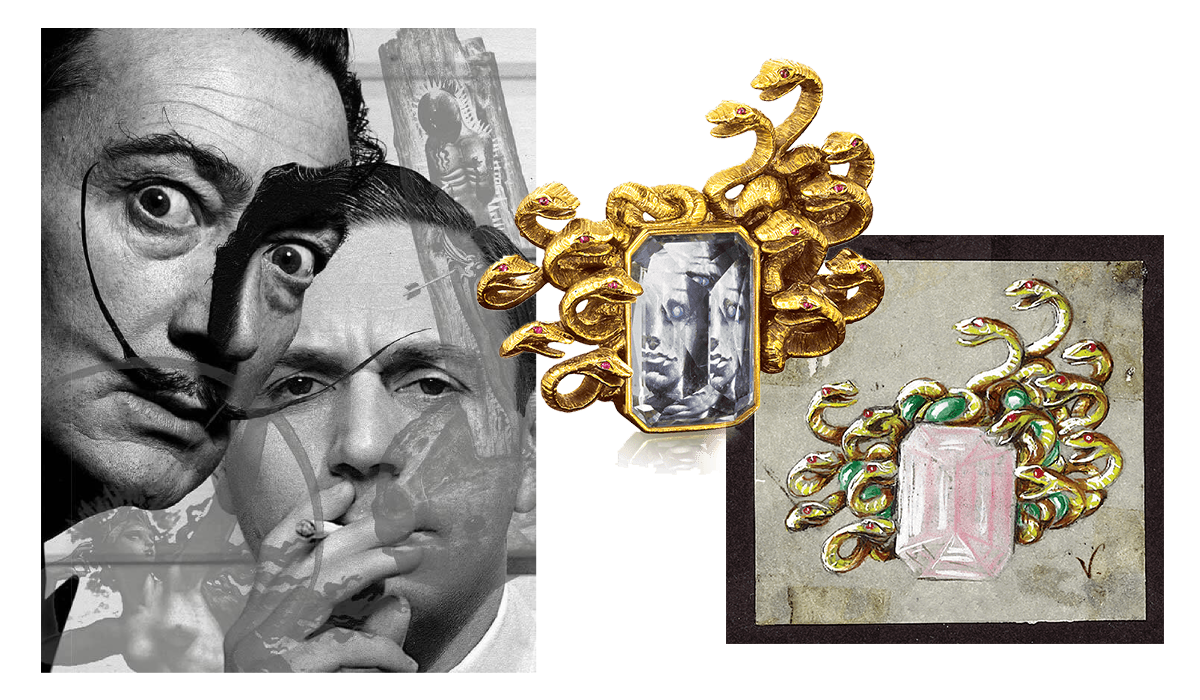
Fulco di Verdura and Salvador Dalí.
The two images are courtesy of Verdura.
The collection was so dazzling that it was exhibited and sold at the Museum of Modern Art in New York, drawing admiration for its remarkable artistic value. Furthermore, the partnership ignited a lifelong fascination with jewelry in Dalí and spurred Fulco’s passion for miniature painting, creating a remarkable melding of fine art and high-end jewelry in this era.
The decade also featured the introduction of the Wrapped Heart brooch, purchased by Tyrone Power as a festive gift for his wife the French actress Annabella.

French actress Annabella wearing Verdura's Wrapped Heart brooch.
The two images are courtesy of Ŧhe ₵oincidental Ðandy and Stream24 - Il Sole 24 ORE.
Verdura's Wrapped Heart Brooch stands out as a timeless favorite. This romantic design debuted with a gorgeous ruby heart elegantly wrapped in a yellow-gold sash. The intertwining of the vibrant ruby with the warm gold creates a stunning visual metaphor for a heart bound by love. Today, this iconic motif continues to captivate as one of the jeweler's most enduring creations, making it a dream gift for any lady from her beloved.
In 1944, Verdura unveiled the “Double Crescent” bracelet, a design that instantly captured the hearts of fashion icons like Marjorie Meriwether Post and Diana, Princess of Wales.
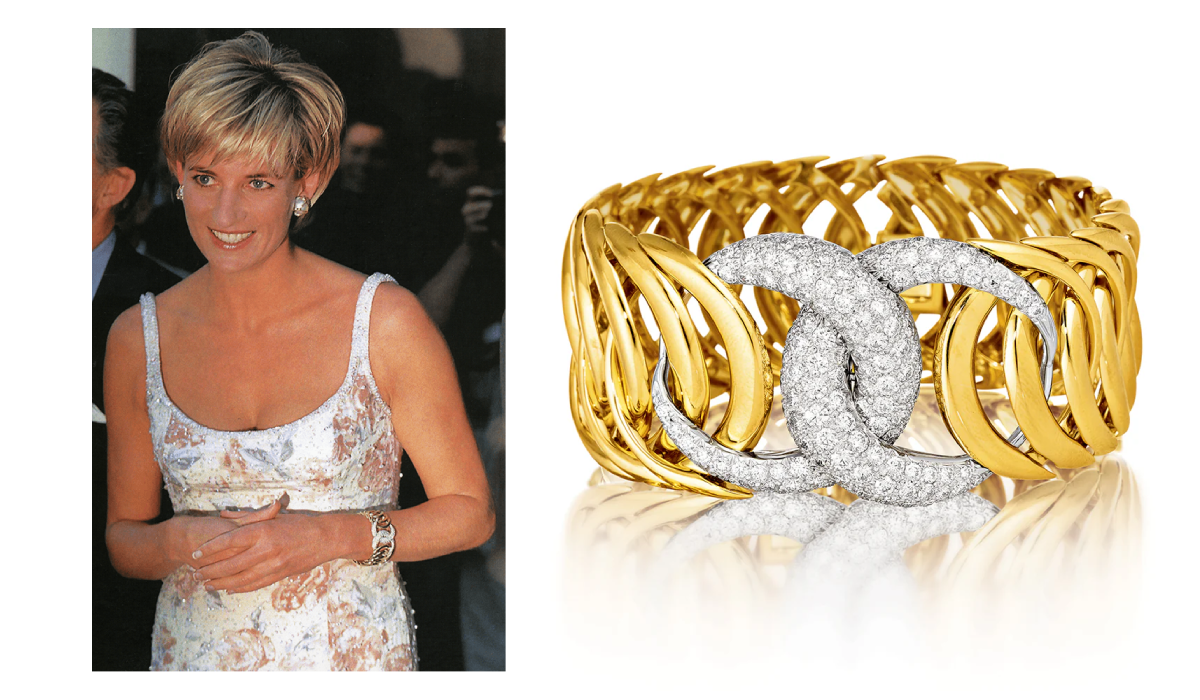
Princess Diana wearing the "Double-Crescent" bracelet and "Diana" earclips during the charity auction of her dresses at Christie's.
The two images are courtesy of Verdura.
The bracelet is a true masterpiece of design, featuring unique interlocking Cs, a nod to the cipher of Diana, the Roman goddess of the hunt, symbolizing elegance and strength. Crafted from 18k gold and platinum, the bracelet is set with sparkling round diamonds that have dazzled the elite for decades.
The Duke's Legacy Lives On
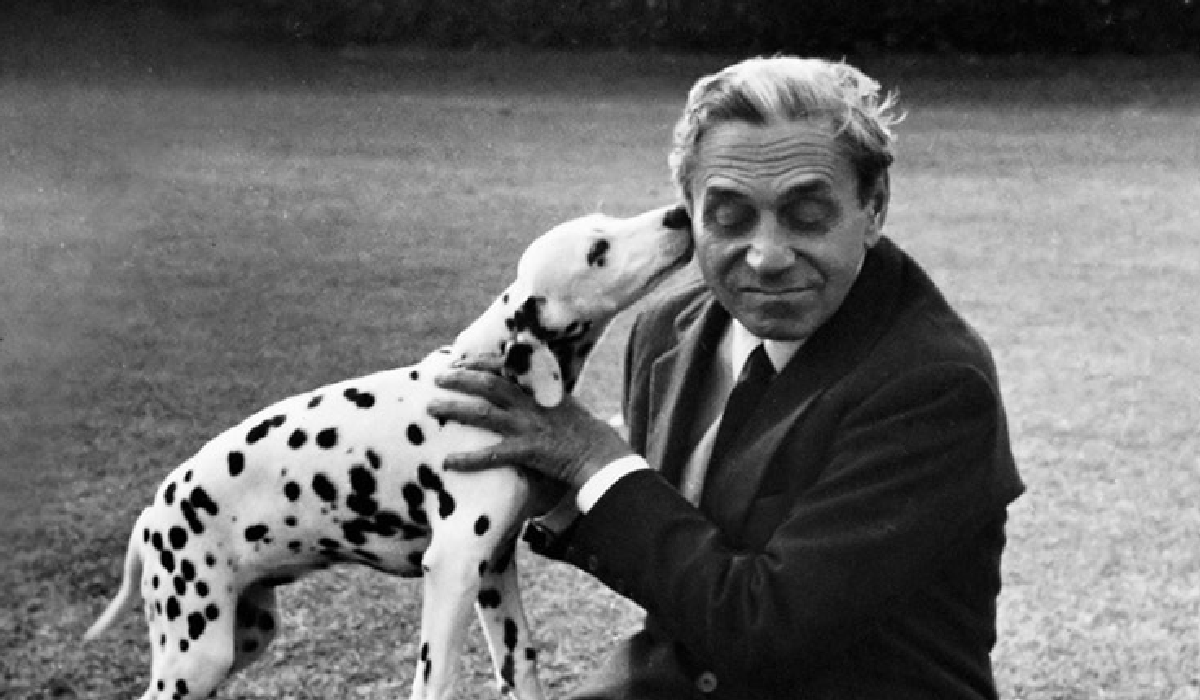
Fulco di Verdura with a dog.
Image courtesy of Verdura.
Decades have passed since Fulco di Verdura first established his legacy in the luxury jewelry industry, renowned for integrating large gemstones, yellow gold, and stunning elements like seashells into his creations.
Verdura revolutionized jewelry design by turning classic motifs—ropes, coins, and caning—into coveted jewelry, transforming them into stunning, sought-after treasures.
Timeless, exquisite, and distinctly innovative, each piece from Verdura has set a gold standard in the world of fine jewelry, adored by Mademoiselle Coco Chanel and now by a broad global audience.
After remarkable success, the aristocratic Fulco retired in 1973 and passed away at 79. In 1976, Fulco di Verdura released his memoirs, The Happy Summer Days: A Sicilian Childhood, a nostalgic look back at his enchanted childhood in Sicily.
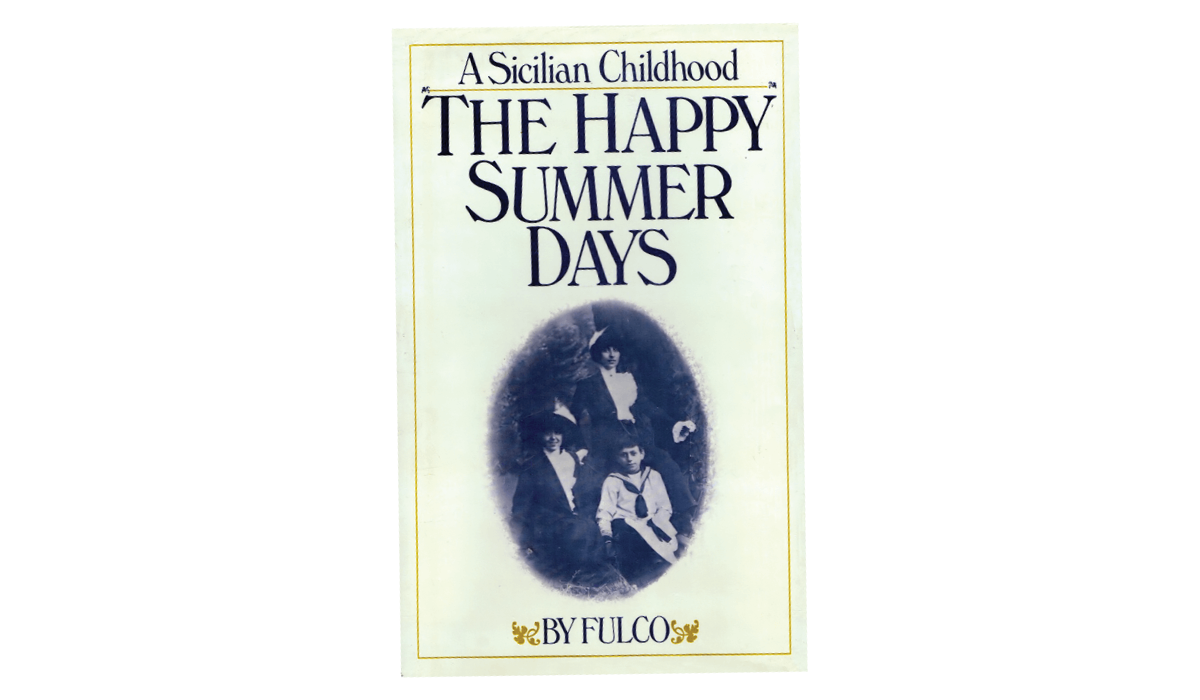
The Happy Summer Days: A Sicilian Childhood cover.
Image courtesy of Verdura.
His book transports readers to the early 20th century, offering detailed snapshots of a lost era characterized by opulent palaces, lush gardens, and expansive parks—each page a celebration of the grandeur and beauty of his early years.
Saying the Duke has 'died' hardly does justice to his enduring legacy—his iconic designs continue to thrive, their vibrancy and relevance showing no signs of diminishing with time.
About The Writer
Meet Mariam - a fashion writer with a geek-level enthusiasm for all things vogue and glamor. For her, the most therapeutic aspect of fashion goes beyond simply shopping for the latest styles that appear in stores—it’s fully experiencing this glamorous world from the little details to the big moments (because who doesn’t enjoy flipping through a glossy fashion magazine?).

